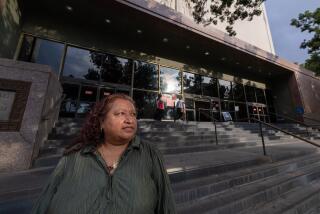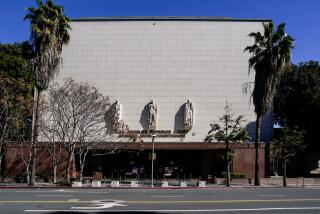Mediation May Ease Logjam in Torranceâs Civil Courts
Lawyers like to talk about the good old days around Torrance Superior Court, when they recognized most of the other attorneys and it took just a year or two to get a civil case to trial.
However, times have changed.
A vast increase in legal traffic over the last decade and not much change in the number of judges hearing cases has doubled the time--to three or four years--that it takes to bring a civil case to trial in Torrance, according to statistics from the executive office of the Los Angeles Superior Court.
To combat such delays, the South Bay Bar Assn. early next year will launch a civil mediation service. Volunteer lawyers will hear cases and propose settlements that could resolve disputes years before they would go to a jury trial. The experiment comes at a time when court administrators are planning other changes to ensure that cases advance more rapidly.
âAs Bad as the Restâ
âThe Torrance court used to have an excellent reputation for getting cases out to trial, compared to downtown and the other courts,â Torrance lawyer Robert Popeney said. âIn the last few years, Torrance has gotten just as bad as the rest of them.â
Popeney, vice president of the local bar, and four other lawyers have agreed to mediate the voluntary settlement conferences.
Organizers hope to find at least 26 more lawyers who will donate their time to the project. Popeney, bar president Emilie Elias and president-elect Rick Lyman are recruiting mediators and organizing the service.
Litigants will receive a notice informing them of the non-binding mediation service at the time of trial-setting conferences, which are typically held from six months to two years after a case has been filed.
If both the plaintiff and defendant agree, Popeney said, they will be assigned a mediator who is experienced in the field of law in question. Both sides will submit briefs, and the mediators will hear short arguments in their offices. A recommended financial settlement will usually be made within two weeks, Popeney said.
âIt will be informal and the mediator will say, âThis is what I think the case is worth,â â Popeney continued. âIn a standard personal injury case, most mediators would probably have a value in mind before the conference is over.â
If both sides donât agree to the proposed settlement, the case will return to the trial waiting list.
Santa Monica Superior Court has provided mediation for 1 1/2 years, under a program established by Judge Richard Harris. Mediators there settled about 55% of the 284 cases they heard in the first nine months of this year, Harris said. And 150 lawyers have agreed to contribute a day of their time in early 1988 to a crash program that will attempt to mediate all 500 cases that have been set for trial in Santa Monica.
Robert Mallano, supervising judge of Torrance Superior Court, welcomed the mediation service. âAny case they settle is a big help,â Mallano said. âIt will cut down a lot on the procedural matters that take court time.â
Mediation succeeds in resolving cases because it lowers the unreasonable expectations of plaintiffs and defendants, Mallano said.
The Torrance courthouse, one of 10 branches of Los Angeles Superior Court, has been fighting to keep up with its increasing caseload. The number of civil cases filed in the last seven years has increased 76%, to 7,068 in fiscal 1986-87, while criminal filings have jumped 91%, to 2,891 in the same period, according to Janice K. Lloyd, district chief for the county clerk.
The load is made heavier because other branch courts with even more severe backlogs frequently refer their cases to Torrance. And the number of judges in Torrance, the seat of the courtâs Southwest District, has increased only fractionally since 1980.
The court must give preference to criminal cases because defendants have a constitutional right to a speedy trial, and that means longer delays for civil suits. In the year ending July 1, Torrance judges spent about half their total time with criminal cases, compared to 31% in 1979.
Court statistics confirm that the time to trial in civil cases--defined as the period after both sides agree that they are ready for trial, but before the trial starts--has considerably increased in the last 10 years. The median time this year is 34 months, compared to only 14 months in 1977.
Two other changes could reduce the backlog next year, Lloyd said.
As of Jan. 1, all civil cases in which the damages sought are less than $50,000 will automatically be referred to a retired judge for non-binding arbitration. In the past, only cases worth less than $25,000 were eligible for such arbitration, which has settled a substantial number of cases.
And sometime in the new year, a three-member team of clerks from the Superior Courtâs executive office will come to Torrance and purge files of inactive cases.
In the past, it was left to lawyers to apply for trial dates and to push their cases through the system or remove them from the courthouseâs docket.
More to Read
Sign up for Essential California
The most important California stories and recommendations in your inbox every morning.
You may occasionally receive promotional content from the Los Angeles Times.











